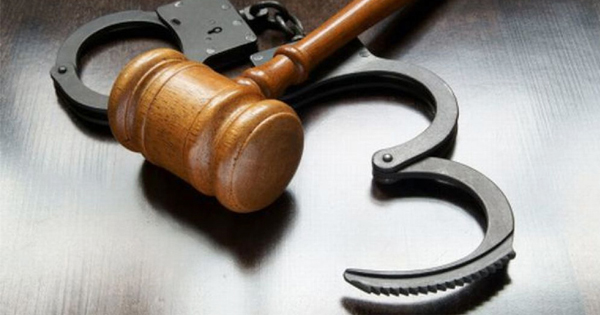A drunk driving crash upends lives in seconds, and the path to fair compensation can feel opaque. Victims often want to know what an “average” settlement looks like in New York and how their circumstances will influence that number. This guide explains the variables that shape settlement value, from the severity of injury to available insurance and potential claims under dram shop laws. You’ll also learn how evidence like BAC results, police reports, and witness accounts strengthens liability arguments and damages claims. If you’re researching a Drunk Driver Accident Settlement NYC victims commonly ask about, this article provides practical, data-driven context and the steps that can move a claim forward. When the stakes are high, seasoned counsel such as Sakkas, Cahn & Weiss, LLP can help you navigate the process with a focus on accountability and results.
How Drunk Driving Settlements Are Calculated Under New York Law
Determining an appropriate payout is less about averages and more about the math of your specific case. In New York, settlements are driven by the categories of damages you can prove—medical costs, lost income, and non-economic harms like pain and suffering—multiplied by the strength of your liability evidence. Insurance limits play a central role; many settlements track the at-fault driver’s bodily injury policy, plus any available supplemental underinsured motorist (SUM) coverage. New York’s *pure comparative negligence* rule can reduce recovery if a victim shares fault, but intoxication evidence often tilts liability strongly against the defendant. For those exploring a Drunk Driver Accident Settlement NYC insurers might offer, remember that intoxication can also open the door to punitive damages in rare, egregious cases, changing negotiations substantially.
Key factors that drive settlement value
- Policy limits and stacking opportunities (defendant liability, employer coverage if on-the-job, and your own SUM/UM)
- Severity and permanence of injuries (fractures, surgery, traumatic brain injury, spinal damage, scarring)
- Proof of liability (DWI charge, BAC results, admissions, video)
- Economic losses (medical bills, rehabilitation, home care, wage loss, diminished earning capacity)
- Non-economic harms (pain and suffering, loss of enjoyment, loss of consortium)
- Venue tendencies and jury verdict history in the county
- Trial readiness and the credibility of your treating doctors and experts
In practice, minor-to-moderate injury claims with documented treatment and clear liability might resolve within policy limits ranging from tens of thousands to low six figures. Serious injuries requiring surgery, extended rehabilitation, or leaving lasting limitations can command mid-to-high six figures, while catastrophic harm (such as TBI or paralysis) can push well into seven figures when coverage permits. New York’s no-fault benefits pay initial medical bills and a portion of lost wages, but you must satisfy the serious injury threshold to pursue pain and suffering against the at-fault driver. Settlement numbers also reflect comparative fault arguments, liens and offsets, and the risk calculus of trial. Experienced firms calibrate demand strategies to the venue and known insurer tactics to maximize recovery under New York law.
Proving Negligence with BAC Evidence and Police Documentation
Evidence of intoxication is often the centerpiece of liability in a drunk driving case. Under New York Vehicle and Traffic Law §1192, driving with a BAC of 0.08% or higher is per se intoxication, and 0.18% constitutes aggravated DWI—both powerful tools in civil negotiations. Prosecutors and police typically generate rich documentation: arrest paperwork, chemical test results, field sobriety test notes, and body-worn camera footage. Chain-of-custody for breath or blood samples can matter, as does the timing between the crash and the chemical test for retrograde analysis. Even a refusal to take a chemical test can carry adverse implications in civil litigation when supported by other evidence, raising the settlement ceiling beyond a typical Drunk Driver Accident Settlement NYC adjusters initially float.
What evidence carries the most weight
- Certified chemical test results (breathalyzer or blood draw) with calibration and chain-of-custody records
- Criminal case outcomes (guilty pleas or convictions) that can simplify civil fault arguments
- Police accident reports, officer observations, and standardized field sobriety test performance
- Dashcam and bodycam footage, 911 recordings, and dispatch logs
- Eyewitness statements and surveillance video from nearby businesses
- Photos of the scene, vehicle damage patterns, skid marks, and road conditions
- Event data recorder (EDR) downloads showing speed and braking in the moments before impact
- Admissions, open container evidence, and bar receipts that tie drinking to the crash timeline
While police reports contain hearsay, portions may be admissible under the business records exception, and officer observations often carry weight with insurers and jurors. A criminal conviction can have preclusive effect on liability, streamlining your civil case and nudging settlement negotiations upward. Defense teams may challenge test accuracy or causation, but timely preservation letters and FOIL requests secure fragile evidence early. The most persuasive presentations combine BAC data with reconstruction evidence, witness accounts, and medical proof of injury severity. Bundled together, these elements help transform contested liability into leverage, supporting a stronger Drunk Driver Accident Settlement NYC outcome than initial offers might suggest.
Understanding Dram Shop Liability for Bars and Restaurants
Beyond suing the intoxicated driver, New York law may allow claims against establishments that unlawfully served alcohol. Under General Obligations Law §11-101 and Alcoholic Beverage Control Law §65(2), a bar or restaurant can be liable if it knowingly served a minor or visibly intoxicated person who later caused the crash. The standard focuses on what the server observed: slurred speech, unsteady gait, bloodshot eyes, loud or belligerent behavior, or obvious impairment. These cases require meticulous investigation, because venues rarely admit overservice and surveillance video may be overwritten quickly. When viable, dram shop claims add another insurance policy—liquor liability coverage—often increasing the practical settlement ceiling.
Evidence that supports dram shop claims
- Receipts, itemized tabs, and POS timestamps showing rapid or excessive service
- Surveillance footage and door camera logs capturing patron behavior and intoxication signs
- Staff depositions, training records (e.g., TIPS/ServSafe), and prior overservice incidents
- Expert toxicology and retrograde BAC analysis linking service time to impairment level
- Witness testimony from patrons or ride-hail drivers observing visible intoxication
- Incident logs, bar pour records, and credit card data connecting the driver to the venue
Establishing that unlawful service contributed to the crash can shift negotiations dramatically, especially when the driver’s auto policy is modest. Insurers may attempt to argue that the driver’s independent choices break the chain of causation, but contemporaneous records and expert analysis frequently overcome that defense. Plaintiffs can apportion fault among the driver and the establishment, expanding the pool of available coverage and producing more realistic compensation for severe injuries. Law firms skilled in discovery tactics can unearth hidden data—like POS audit trails—that bolster dram shop liability. Teams such as Sakkas, Cahn & Weiss, LLP understand how to synchronize these claims with the auto case to keep pressure on all responsible parties.
Medical Costs, Lost Wages, and Non-Economic Damages Explained
New York damages begin with economic losses: past and future medical costs, lost wages, and impaired earning capacity. No-fault coverage provides initial benefits, but long-term care, surgeries, and rehabilitation quickly exceed basic PIP limits. To recover pain and suffering, victims must meet the serious injury threshold under Insurance Law §5102(d), triggering the right to seek non-economic damages. Catastrophic injuries—brain trauma, spinal cord damage, complex fractures—often involve life care plans, home modifications, and specialized transportation, which can elevate settlement value far above the typical Drunk Driver Accident Settlement NYC figure. Thoughtful documentation and credible expert testimony turn a medical narrative into a compelling damages model.
Documenting damages comprehensively
- Complete medical records, imaging, surgical reports, and attending physician narratives
- Functional capacity evaluations, vocational assessments, and economist projections
- A life care plan detailing future therapies, prescriptions, equipment, and attendant care
- Payroll records, tax returns, and employer statements substantiating wage loss and benefits
- Pain journals, day-in-the-life videos, and testimony from family or caregivers
- Lien audits and coordination with health insurers, Medicare/Medicaid, and workers’ comp
Non-economic damages capture the human cost: pain, mental anguish, limitations in daily life, and loss of enjoyment. New York does not use a strict “multiplier,” so attorneys often rely on verdict research and analog cases in the same venue to set anchors for negotiation. Collateral source rules and lien reductions under CPLR 4545 can influence net recovery, making experienced negotiation critical to protect a client’s bottom line. Punitive damages may be appropriate in especially egregious drunk driving scenarios, though they are not routine and require clear proof. With thorough documentation, counsel can transform complex medical realities into persuasive exhibits that push settlement numbers beyond baseline expectations for a Drunk Driver Accident Settlement NYC claim.
Why Legal Representation Ensures Accountability and Maximum Payouts
Insurance companies evaluate risk, not fairness, and they tend to offer more when facing a trial-ready opponent. A seasoned New York injury firm coordinates the civil case with the criminal matter, preserving evidence and leveraging admissions or convictions. Skilled lawyers expand coverage by identifying every policy—auto, employer, rideshare, and liquor liability—then pursue SUM/UM where applicable. They also manage liens and offsets, negotiate with medical providers, and prepare experts whose testimony stands up in court. This holistic pressure increases the probability of a settlement that reflects full value rather than a discount to avoid litigation, a crucial difference in any Drunk Driver Accident Settlement NYC negotiation.
How lawyers maximize leverage
- Rapid evidence preservation and on-scene investigation with reconstruction experts
- Tracking the criminal case, obtaining BAC proofs, and using convictions for collateral estoppel
- Pursuing dram shop claims to access liquor liability coverage and increase policy limits
- Filing SUM/UM claims and stacking coverages where contracts allow
- Using venue-specific verdict data to set assertive, defensible settlement anchors
- Mediation and high-low agreements to manage risk while maintaining upside
- Comprehensive lien resolution to protect net recovery and client satisfaction
Deadlines matter: no-fault claims typically require notice within 30 days; most personal injury suits have a three-year statute of limitations, and wrongful death claims generally have two years (shorter timelines apply to municipal defendants and require a 90-day notice of claim). Counsel ensures compliance with these rules, prepares for trial if necessary, and communicates the true value of the case through expert-backed narratives. In practice, defendants pay closer to full value when they believe a jury will hear the story. Firms like Sakkas, Cahn & Weiss, LLP bring that credibility, combining meticulous investigation with strategic negotiation to hold all responsible parties accountable. If you need clarity on how these principles apply to your situation, an attorney experienced in New York’s laws can translate your facts into a targeted plan for maximum recovery.











